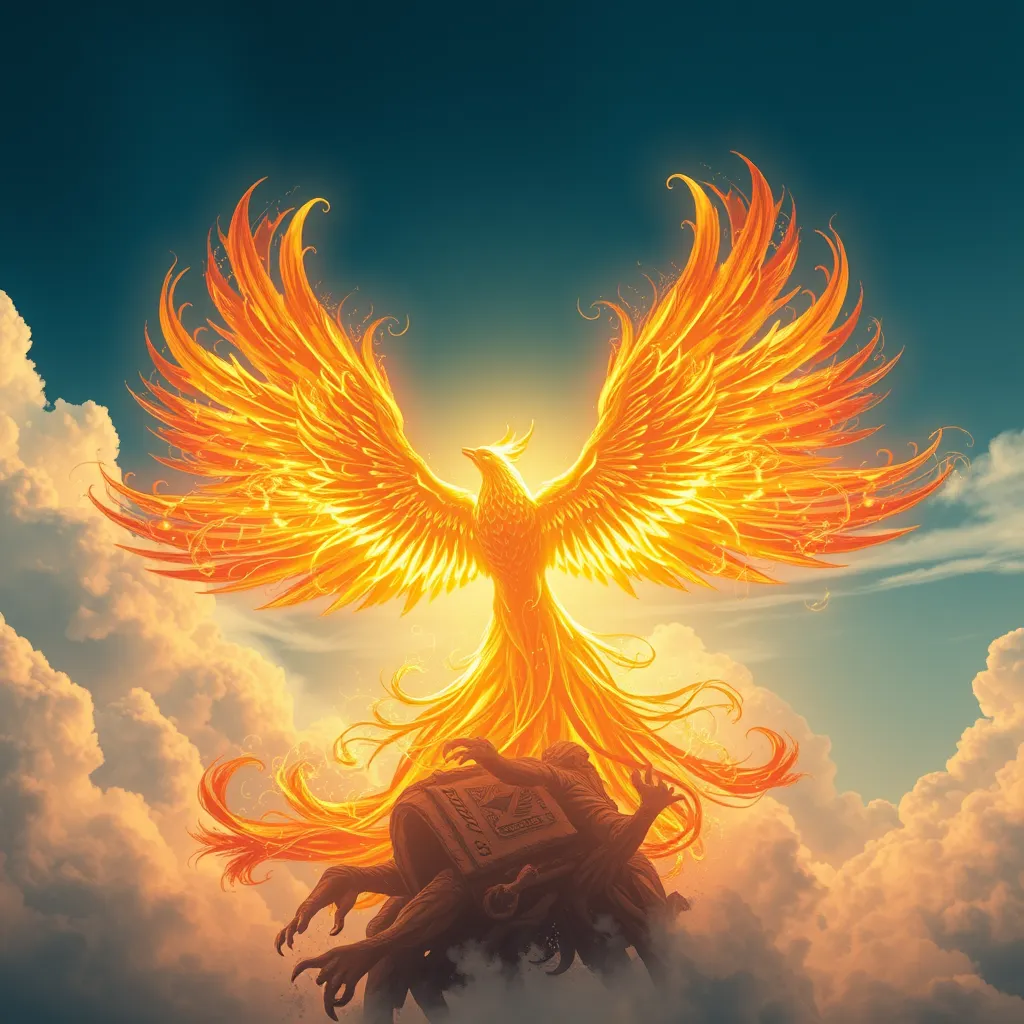Phoenix Reborn: The Cyclicality of Life, Death, and Renewal in Myth and Legend
I. Introduction
The Phoenix is a legendary bird found in various mythologies, renowned for its ability to rise from its ashes after death. This majestic creature embodies the themes of life, death, and renewal, making it a powerful symbol throughout history. The cyclicality of existence, represented by the Phoenix, speaks to the natural processes of destruction and regeneration that govern our world.
This article aims to explore the significance of these mythological themes, delving into the origins of the Phoenix myth, its representations in nature and culture, and its impact on human psychology and modern storytelling. By examining the cyclical nature of life and death, we can gain insights into our personal journeys of renewal and growth.
II. The Myth of the Phoenix: Origins and Symbolism
The Phoenix myth has roots in ancient civilizations, including Egyptian, Greek, and Roman cultures. In Egyptian mythology, the Bennu bird is often associated with the sun and creation, symbolizing rebirth and renewal. The Greeks later adopted this imagery, describing a bird that would combust upon reaching the end of its life cycle, only to emerge anew from its ashes.
Symbolically, the Phoenix represents the concept of rebirth, illustrating that even after the most profound destruction, new life can emerge. This concept resonates across cultures, where the Phoenix serves as a metaphor for resilience and the perpetual cycle of life. Other mythical creatures, such as the Ouroboros (the snake eating its own tail) and the butterfly (representing metamorphosis), also embody themes of renewal, emphasizing the interconnectedness of life and death.
III. Cyclicality in Nature: Parallels with the Phoenix
Nature is filled with cycles that mirror the Phoenix narrative, showcasing the interplay between life, death, and renewal. Consider the following natural cycles:
- Seasons: The changing seasons illustrate a cycle of death and rebirth, with winter symbolizing death and dormancy, followed by spring’s renewal.
- Ecosystems: Ecosystems experience destruction through events like wildfires, which can lead to regeneration, allowing new life to flourish.
- Life Cycles: Individual organisms undergo life cycles that include birth, growth, death, and the continuation of life through reproduction.
The role of destruction is critical in these natural processes; it makes way for new growth and transformation. Just as the Phoenix rises anew, nature teaches us that endings often lead to new beginnings, providing valuable lessons about resilience and adaptation.
IV. Cultural Interpretations of Life, Death, and Renewal
Different cultures have unique perspectives on life, death, and rebirth, often reflected in their mythologies and traditions. For instance:
- Eastern Traditions: In many Eastern philosophies, such as Hinduism and Buddhism, life and death are seen as part of a continuous cycle (samsara), emphasizing the importance of rebirth and spiritual evolution.
- Western Traditions: In contrast, Western narratives often focus on the finality of death, yet the Phoenix myth introduces a perspective of hope and renewal, suggesting that life continues in various forms.
These contrasting views have significant implications for cultural practices and beliefs, influencing rituals surrounding death and rebirth, such as funerary customs and celebrations of life. The Phoenix serves as a bridge between these perspectives, reminding us of the universal nature of renewal.
V. Literary and Artistic Representations of the Phoenix
The Phoenix has inspired countless literary and artistic works throughout history. In literature, the Phoenix appears in ancient texts, such as Herodotus’s writings, and continues to captivate modern authors in genres ranging from fantasy to poetry.
Artistic depictions of the Phoenix can be found across various mediums, including:
- Visual Arts: Paintings and sculptures often capture the vibrant colors and majestic form of the Phoenix, symbolizing beauty, strength, and renewal.
- Film and Theatre: Many contemporary films and plays incorporate the Phoenix as a symbol of transformation and personal growth, resonating with audiences seeking inspiration.
As a metaphor for personal transformation, the Phoenix encourages individuals to embrace change and rise above challenges, reflecting the human experience of resilience and rebirth.
VI. Psychological Perspectives on Renewal and Resilience
From a psychological standpoint, the concept of life cycles plays a significant role in understanding human experiences. The Phoenix symbolizes not only the physical cycle of life and death but also the emotional and spiritual journeys individuals undertake.
Embracing the Phoenix narrative can offer therapeutic benefits, such as:
- Promoting Resilience: Recognizing that challenges can lead to growth helps individuals build resilience and cope with adversity.
- Fostering Personal Growth: The idea of renewal encourages individuals to reflect on their experiences, learning from the past and striving for a better future.
By understanding and accepting the cycles of life, individuals can find strength in their journeys, viewing obstacles as opportunities for transformation.
VII. Modern Applications of the Phoenix Myth
The Phoenix myth continues to resonate in contemporary storytelling and media, adapting to modern challenges and cultural contexts. Today, we see the Phoenix represented in various forms:
- Literature and Film: Modern narratives often utilize the Phoenix as a symbol of hope and transformation, inspiring characters to overcome adversity.
- Inspirational Movements: Philosophies and movements focused on personal growth, such as self-help and wellness, draw upon the Phoenix myth to encourage individuals to embrace change.
The relevance of the Phoenix narrative is profound, serving as a source of inspiration for individuals facing personal struggles, societal changes, or global challenges. It reminds us that renewal is possible, even in the face of despair.
VIII. Conclusion
In conclusion, the cyclicality of life, death, and renewal is a fundamental theme reflected in the myth of the Phoenix. This enduring symbol teaches us that destruction can lead to new beginnings, emphasizing the importance of resilience and transformation in our lives.
The legacy of the Phoenix myth continues to shape human understanding and cultural practices, encouraging us to embrace the cycles of life. By recognizing the potential for renewal within ourselves, we can embark on journeys of personal growth and rejuvenation, rising from our own ashes as we navigate the complexities of existence.




